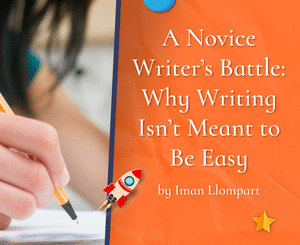Write with Page Turning Tension by Jordan Rosenfeld
 Today we welcome guest writer Jordan Rosenfeld to Writer’s Fun Zone, who is stopping by to chat about “Write with Page Turning Tension.” Enjoy!
Today we welcome guest writer Jordan Rosenfeld to Writer’s Fun Zone, who is stopping by to chat about “Write with Page Turning Tension.” Enjoy!
***
My sixth writing guide, How to Write a Page Turner: How to Craft a Story Your Readers Can’t Put Down will be published on Tuesday, March 19th. It’s available. I’m so excited about sharing this book with you. Every year, through reading, editing, and my own writing, I learn deeper nuances about the writing process. This book contains tips to infuse page-turning tension into every aspect of your story or novel and even memoir.
In the meantime, I’m giving you a little preview of what’s to come:
“Tension in novels, stories, and even memoirs is like the connective tissue that allows muscles to attach to bones, and thus flex their might. It’s the heart of conflict, the backbone of uncertainty, the hallmark of danger. It keeps readers guessing, and characters on their toes. When it’s working, stories leave readers breathless and wanting more. When it’s missing, scenes feel inconsequential, the plot drags, characters meander.” – From How to Write a Page Turner.
Tension must exist:
- In the inner life of your character
- Between characters as they interact
- In the way plot events play out
- How your characters react to/are tested by them;
- How you balance scene elements
- In every sentence
Here are four key elements of creating tension:
DANGER: Danger is a primal experience we’re all hard wired for. You can elicit it when characters are in some form of peril. Two main kinds:
CONFLICT: The art offorces opposing your protagonist & allies. Conflict can exist between:
UNCERTAINTY: Use this crucial form of tension and suspense as follows:
WITHHOLDING: Withholding is not giving someone something they want, or not in the time they want it. It creates complex feelings within characters.
TENSION KILLERS:
Tension is often about what you leave out as much as what you leave in.
You can cut:
- “Stage directions”—Actions that are not character or plot significant.
- Mundane dialogue/pleasantries that don’t drive plot or character
- Info dump style of plot-revelations (in dialogue or narrative summary), villains monologuing, etc.
- Characters doing quotidian things to create a simulation of reality.
- “Architectural Digest” descriptions of settings.
For more: Check out this post I did on Jane Friedman’s blog: 8 Mundane Elements to Cut From Your Story.
***
ABOUT JORDAN ROSENFELD
 Author of the books: WRITING THE PAGE TURNER (2019), WRITING THE INTIMATE CHARACTER, WRITING DEEP SCENES, A WRITER’S GUIDE TO PERSISTENCE, MAKE A SCENE, and WRITE FREE. Her novels are: WOMEN IN RED, FORGED IN GRACE, and NIGHT ORACLE.
Author of the books: WRITING THE PAGE TURNER (2019), WRITING THE INTIMATE CHARACTER, WRITING DEEP SCENES, A WRITER’S GUIDE TO PERSISTENCE, MAKE A SCENE, and WRITE FREE. Her novels are: WOMEN IN RED, FORGED IN GRACE, and NIGHT ORACLE.
Jordan Rosenfeld’s work has appeared in The Atlantic, GOOD, The Daily Beast, Mental Floss, New York Magazine, The New York Times, Pacific Standard, The Rumpus, Salon, Scientific American, The Washington Post, Writer’s Digest magazine and more.
More about Jordan, her books, workshops, and her new online school, here: http://jordanrosenfeld.net/.






